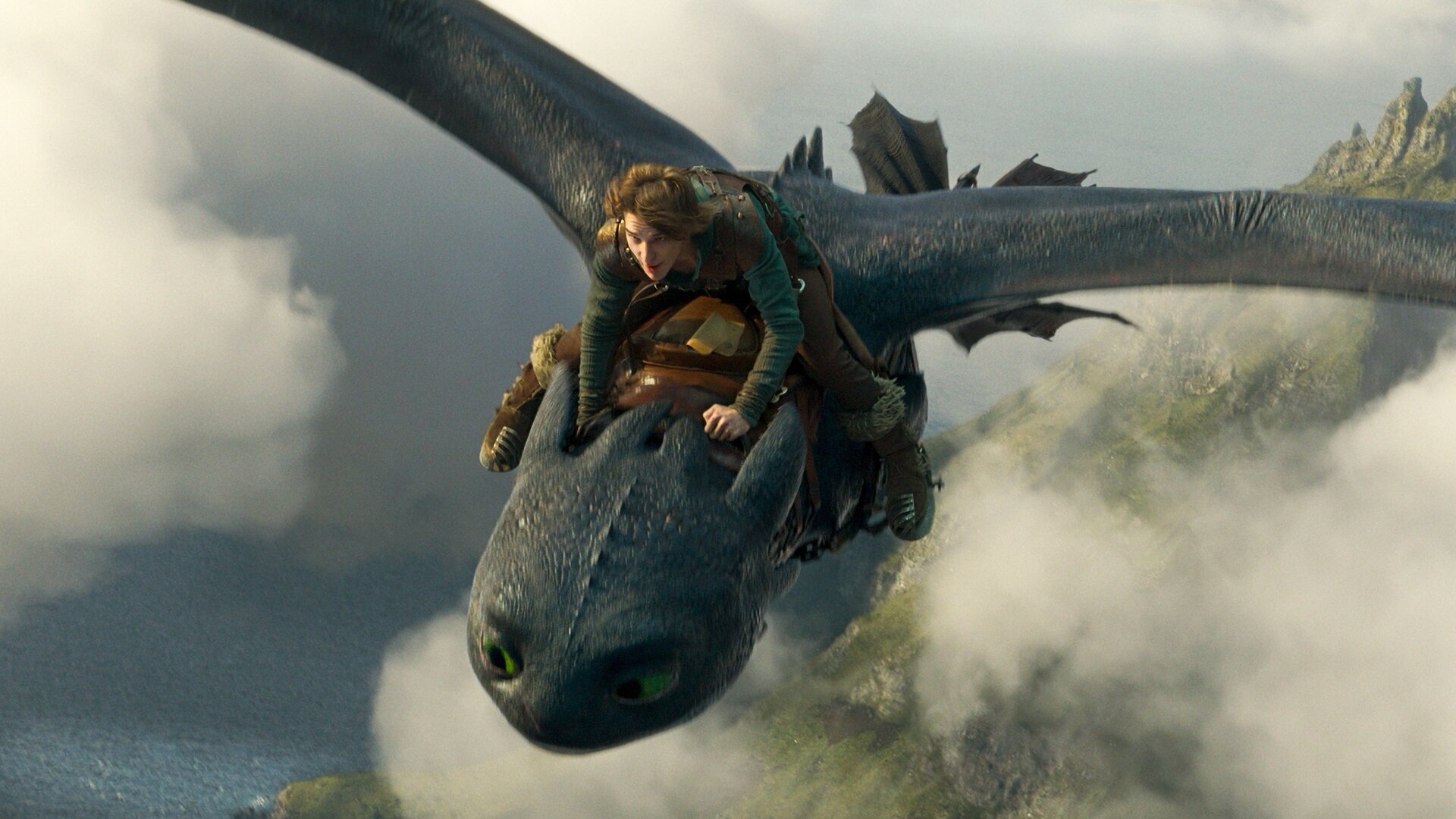
Since the launch of Disney+, Marvel and Star Wars have been the two main pillars of the platform’s promotion and expansion strategy, with numerous original series driving much of the early momentum of the service. And while the two franchises share nothing creatively, their trajectories on Disney+ have been relatively parallel.
Both had a strong initial run on Disney+. The Mandalorian kicked things off in November 2019 with the U.S. launch of the service. It was a major success, largely fueled by the Baby Yoda phenomenon. A year later, season 2 followed and reached heights that no Disney+ original series has surpassed since (so far).
Right after The Mandalorian’s second season, Disney launched its first MCU series: WandaVision, in January 2021. That year saw the release of four MCU series in total, with Loki becoming a major hit. On the Star Wars side, The Book of Boba Fett benefited from its ties to The Mandalorian and scored well, while Obi-Wan Kenobi delivered a massive performance in May—despite facing Stranger Things season 4 at the same time.
Summer 2022 marked a turning point. Ms. Marvel flopped (arguably due to its different target audience compared to other MCU shows), while She-Hulk managed to keep things afloat as the final series of Phase 4. Andor had a modest debut, and shortly afterward, Bob Chapek was ousted and replaced by Bob Iger, who chose to scale back original productions on Disney+ across the board. In early 2023, The Mandalorian’s season 3 failed to recapture the audience from season 2.
As for the MCU, the launch of Phase 5 (set to conclude with Ironheart in a few days) has been underwhelming: Secret Invasion, Loki season 2, Echo, and Agatha All Along have all posted viewership numbers well below the early MCU series. Worse still, the most recent entry, Daredevil: Born Again, failed to make Nielsen’s Top 10—marking the first time an MCU live-action series has missed the U.S. charts entirely.
It hasn’t been much better for Star Wars during this period either. Apart from Ahsoka (renewed for a second season), The Acolyte has been canceled, as has Skeleton Crew, most likely. And despite its critical acclaim, Andor season 2 has drawn some of the lowest viewership numbers for a live-action Star Wars series. Its performance on Nielsen charts was salvaged only by its release strategy (three episodes per week over four weeks) and the fact that all 12 episodes of season 1 were also available and counted in the same tracking window (in fact, during the first week of season 2, season 1 accounted for 35% of total viewership reported by Nielsen).
Here’s what that evolution looks like from a U.S. viewership perspective. The methodology is relatively straightforward: it’s the weekly average number of Complete Viewing Equivalent (CVEs) during the airing period, based on Nielsen data, with some estimations for multi-season series and series that didn’t appear in the Nielsen Top 10 for the full duration of their release. Also, since Echo was released all at once, the estimate is a personal one based on its binge release viewership.

To see an enlarged version, right-click on the picture and choose “Open the picture”
For the MCU, it seems that the transition between phases may be one of the reasons behind the audience’s declining interest—at least on streaming. Series from Phase 4 averaged around 12.4 million CVEs per week, while those from Phase 5 are struggling to reach just 7.4 million.
If we compare U.S. box office revenue for the latest Marvel films, Phase 4 entries averaged $319 million, while Phase 5 films have brought in an average of $280 million. That’s a smaller gap than what we’re seeing with the Disney+ series, but Phase 5 films have been far more unpredictable and volatile than those in Phase 4—with a huge hit like Deadpool & Wolverine on one end, and much more modest results for Captain America: Brave New World, Thunderbolts, or Ant-Man & The Wasp: Quantumania (not to mention The Marvels).

On Disney+, this drop in interest is also visible when comparing Phase 5 films to those from Phase 4. Phase 4 films averaged 16.9 million CVEs over their first 14 days on the platform, whereas Phase 5 films have hovered around 13.2 million CVEs over the same period (pending the upcoming Disney+ releases of Captain America: Brave New World and Thunderbolts* in the coming weeks).

However, “Marvel fatigue” alone can’t explain why Star Wars is experiencing the exact same trend, following almost the same timeline. It raises the question of whether this is more of a Disney+ issue than a Marvel or Star Wars one.
In the U.S., according to Nielsen’s monthly Gauge report, the combined share of Disney+ and Hulu peaked in October 2022 at 6% of total TV screen time—even though no MCU or Star Wars series were released on the platform at that time (this peak was largely thanks to the release of Hocus Pocus 2, among others).

Today, that share hovers around 5%, but with much less volatility—understandably so, given the low number of original series released by Disney recently. And yet, the number of Disney+ subscribers in the U.S. has increased significantly in recent months, thanks to the service being bundled into various telecom offers and due to some fairly aggressive promotional campaigns.

This means that if we were to index the performance of Star Wars and MCU series and films to the number of Disney+ subscribers in the U.S., the gap between the two periods would be even more significant.
Which brings us back to the original question: what’s going on with Star Wars and Marvel series on Disney+—and more broadly, what’s going on with Disney+ in the U.S.? I don’t have the answer, but if I were to venture a hypothesis, I would simply say that Disney’s disengagement from original productions and the slowdown in original content releases have led subscribers to stop visiting the platform out of habit, as they might have done in the past—back when Disney was flooding the service with new series and original movies week after week, and viewers got used to watching Marvel shows one after another.
The fact that this pivot occurred right around mid-2022—at the time of what has been called the “Great Netflix/Streaming Correction,” when financial markets began to panic over streaming following two consecutive quarters of subscriber losses at Netflix, which then triggered a leadership change at Disney—can’t just be a coincidence. Bob Chapek wanted to keep producing (and spending!) for Disney+, while Bob Iger immediately hit the brakes when he returned.
If you look at the Disney+ U.S. subscriber growth curve, you’ll see that mid-2022 is exactly when growth plateaued for 18 months before being reignited by the now-famous telecom bundles at the end of 2023. So my hypothesis isn’t so much about Marvel fatigue as it is the opposite: Disney simply stopped striking the iron while it was hot, and in doing so, the general audience fell out of the habit. But I could be wrong.
What now?
Of the 18 MCU and Star Wars series mentioned in the first chart, only two are currently set to return for another season: Ahsoka and Daredevil: Born Again (and in the latter’s case, it’s fortunate that season 2 was greenlit before season 1 even premiered—just like with Andor—otherwise it would almost certainly have been canceled). All the others have either ended or been canceled, even if some might have made sense to renew, like Hawkeye (Jeremy Renner reportedly took offense at the salary Disney offered for a potential second season—half of what he was paid for season 1) or Obi-Wan Kenobi (Ewan McGregor stated in October 2024 that Disney and Lucasfilm were exploring the possibility of a second season). And based on the numbers, renewing either of these would have made sense.
Beyond that, there are currently no new live-action Star Wars series announced or in production at the time of writing. Only animated projects are in the pipeline and slated for release soon—but that’s all. The case of The Mandalorian is especially noteworthy here. It’s the flagship Disney+ series, a breakout success, and by now could easily be on its fifth season. Its masked main character requires just a single day of voice recording from Pedro Pascal, with someone else handling the physical acting and CGI work. Yet Disney seems intent on wrapping it up with The Mandalorian & Grogu movie, slated for 2026, which is being positioned as the series' conclusion. This shift from small to big screen will be a key test of the franchise's—and Star Wars’ in general—continued appeal (especially when the film eventually arrives on Disney+, where its numbers will offer further insight).
As for the MCU, beyond Ironheart, 2025 and 2026 are expected to bring us Wonder Man (late 2025) and VisionQuest, a WandaVision spin-off, in 2026. Still better than nothing and just about enough new material to update my little chart!




